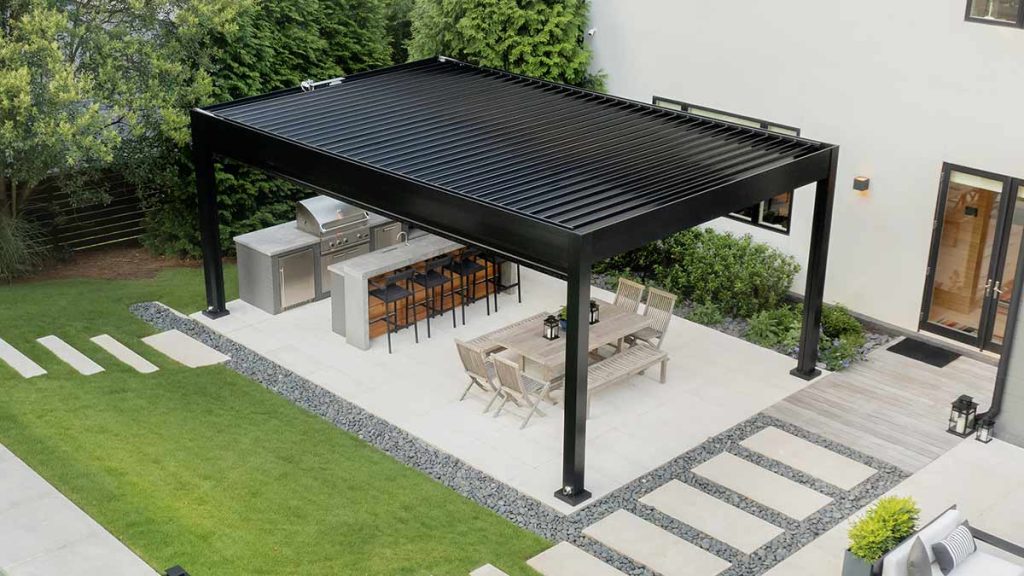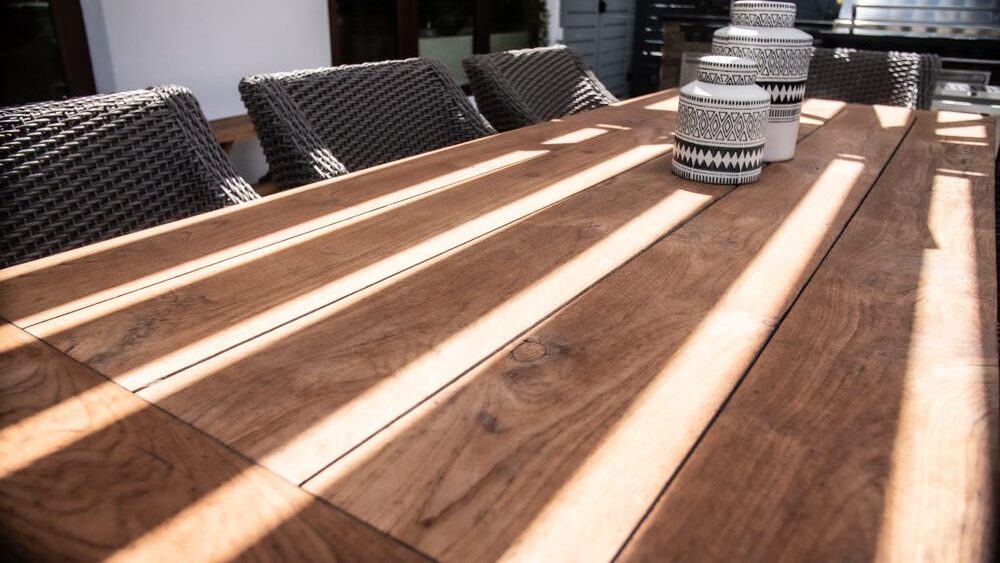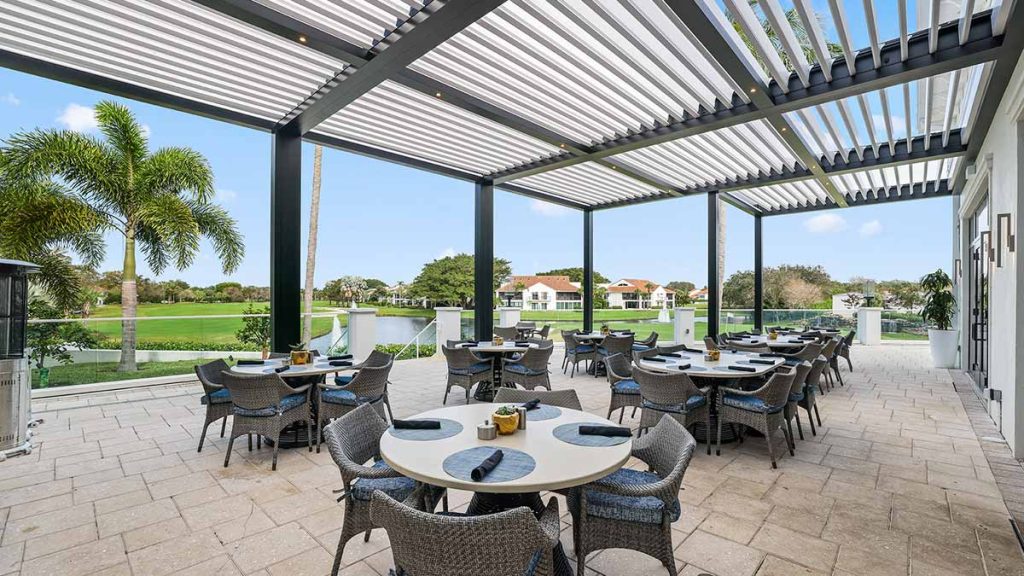
Free Standing Pergolas: Elevate Your Outdoor Space with Style and Functionality
Ever wondered how to transform your outdoor space into a stylish and functional haven? Well, freestanding pergolas are the answer.
We rely on a network of specialists and professionals who know our products and have received a strict installation training. Our dealers are able to install any of our products.
Contact us to connect with the professional installers in your area.
It depends where you are located but for most of Azenco’s outdoor solutions you will need a permit. Your local dealer will be aware of all regulations regarding your project and be able to provide you with accurate information.
However, the K-BANA™ modular unit doesn’t require a permit.
Contact us and we will connect you with our dealer in your area who will be able to help you bild your patio project.
FOR THE PERGOLAS, POOL COVERS AND CARPORTS
After drawing confirmation, obtention of the permit and the dealer schedule our production time frame is usually 2 weeks and can go up to 4 weeks maximum if there is any custom options.
FOR THE CABANA
Our production time frame is usually 2 weeks and can go up to 4 weeks depending on the number of modules.
Of course we offer warranty from the date of installation
We have a showroom at our HQ in Miami, FL. Our outdoor covers are also displayed at your local dealer showroom.
Contact us to connect with our Azenco specialist in your area or arrange an appointment at their showroom.

R-BLADE™ PERGOLA WITH LOUVERED ROOF
Opening procedure after a period of rain:
During the downpour, the rainwater is directed into the gutters located in the structural beams via the louvers. Almost all the water can evacuate, but it is possible that some residual water remains in the louvers.
To allow this remaining water to drain away, we recommend opening the louvers by 10 degrees until all the water falling from the louvers evacuates into the gutter.
Operation of the weather station (OPTIONAL)
A rain sensor, connected to the control box, closes the louvers automatically when it is triggered. The sensor has priority if it is activated. This presence sensor responds to shocks (rain, snow but also leaves, debris, etc.).
The louvered structure, in the closed position, can withstand gusts of wind. However, using the remote control, we recommend opening the adjustable louvers at 60 degrees or 120 degrees, to avoid the wind load effect.
The anemometer has priority over the rain sensor.
From 37° F and below, do not operate the pergola. During heavy snowfall, we recommend opening the Pergola to limit snow accumulation (the weight of one m³ of snow can be multiplied by 10 depending on whether it is powdery, wet or frozen).
Children should not be allowed to operate or perform maintenance on a pergola or carport.
Do not let anyone walk on the pergola or carport.
Your pergola/carport is an asset and should be insured against standard risks: hail, natural disasters, fire, etc.
Regularly check that the locks are working correctly.
Ensure that there is no wind of more than 20 MPH before opening the pergola to avoid damaging the structure.
Azenco’s pergolas gutter system is invisible and control the flows of the rainwater directly into the pergola posts when the louvers are closed. In order to give full performance over time, the gutters may need cleaning to avoid the potential for clogging.
We recommend cleaning the gutters at least twice a year, especially if you have trees near your pergola that have falling leaves.
It is the owner’s responsibility to make sure the gutter downspouts are not dirty to allow the system to perform at its best.
The cleaning process is very easy if done periodically.
How to clean the gutters:
1500 to 2000 PSI MAX.
If you decide to use a pressure washer to clean your pergola or outdoor cover, that is far more efficient than garden hoses and use less water, we highly recommend using low pressure only.
Our experts recommend choosing a pressure washer with a setting option of 1500 to 2000 PSI. It is the safe pressure suggested for cars, so you won’t need to worry about damaging or removing some of the powder coating from the aluminum.
Azenco’s warranty does not cover powder coating damages caused by above 2000 PSI pressure cleaning.
Rinse your outdoor cover and the area thoroughly with clear water immediately after cleaning.

Free Standing Pergolas: Elevate Your Outdoor Space with Style and Functionality
Ever wondered how to transform your outdoor space into a stylish and functional haven? Well, freestanding pergolas are the answer.

Azenco Outdoor – A Great Place to Work!
Azenco Outdoor, based in Miami, FL, is a premier pergola manufacturer with a wide dealer network of over 170+ dealers

Transforming Broken Sound Club: Azenco Outdoor and Syzygy Global’s Stunning Pergola Installation
Azenco Outdoor is a leading pergola design and manufacturing expert renowned for its award-winning, customizable outdoor solutions. Specializing in innovative
PERGOLAS COLLECTION
PHOTO GALLERY
AZENCO OUTDOOR
RESOURCES
POLICIES